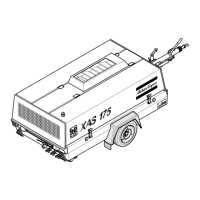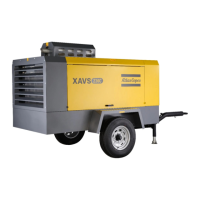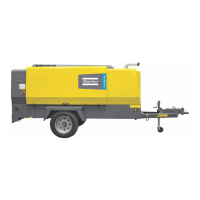1310 3011 73 7
1.5 Tool Applications Safety
Apply the proper tool for each job. With the knowledge of
correct tool use and knowing the limitations of tools, along
with some common sense, many accidents can be
prevented.
Special service tools are available for specific jobs and
should be used when recommended. The use of these
tools will save time and prevent damage to parts.
1 Use only wrenches or sockets whose size fits the
fastener.
2 Apply an open-end wrench only in the place of the
fastener head, square to the thread axis.
3 Do not use a pipe or other improvised leverage
extensions on handles.
4 Do not hammer on wrenches or other tools which are
not specially designed for it.
5 Always support the ratchet head when using socket
extensions.
6 Discard any wrench with broken or battered points or
edges.
7 Never use hand type sockets on power or impact tools.
8 Select only heavy-duty impact sockets for use with
pneumatic or electric impact tools.
9 Replace sockets showing cracks or wear; keep
sockets clean.
10 Never use screwdrivers for prying, punching, chiseling,
scoring or scraping.
11 Use the correct type and size of screwdriver for the
job. The bit must match the fastener.
12 A screwdriver with rounded edges will slip; it needs to
be redressed or discarded.
13 Never use a screwdriver or any other tool near a live
wire or electrical component. Plastic covering of
handles is for comfort and grip only. They are not
intended to act as insulation if such is not clearly
marked by the manufacturer.
14 Never strike a hammer against a hardened object; use
a soft drift against the object and strike against the
drift.
15 Strike the object with the full face of the hammer.
16 Never use a hammer with a loose head.
17 Discard a hammer with chipped or mushroomed face.
18 Never use a chisel or punch with a chipped or
mushroomed striking face.
19 Always pull on a wrench or socket handle, if possible,
and adjust your stance to prevent a fall if something
lets go.
20 Wear approved eye protection when using percussion
tools or when scraping, chipping, shaving or grinding.
21 Wear protective gloves when holding a chisel or
punch.
1.6 Batteries
1 The electrolyte in batteries is a sulphuric acid solution which
can be fatal if swallowed and can cause blindness if the
solution contacts your eyes. It will also cause burns if it
contacts your skin. Therefore, be careful when handling
batteries, e.g. when checking the charge condition.
2 Install a sign prohibiting fire, open flame and smoking at the
post where batteries are being charged.
3 When batteries are being charged, an explosive gas
mixture forms in the cells and might escape through the
vent holes in the plugs.
Thus an explosive atmosphere may form around the battery
if ventilation is poor, and can remain in and around the
battery for several hours after it has been charged.
Therefore:
- never smoke near batteries being, or having recently
been, charged,
- never break live circuits at battery terminals, because a
spark usually occurs.
4 When connecting an auxiliary battery (AB) in parallel to the
unit battery (CB) with booster cables: connect the + pole of
AB to the + pole of CB, then connect the - pole of AB to the
mass of the unit. Disconnect in the reverse order. Incorrect
connection will damage alternator.
1.7 Ether fuel Systems
Ether fuel systems are used for diesel cold starting.
1 Do not use ether as a starting aid in conjuntion with other
stating aids (i.e. glow plug, air intake heater etc..) as an
explosive condition may result in severe engine damage or
personal injury.
2 This type of fuel is extremely flammable, toxic and
poisonous. Avoid contact with eyes or skin and breathing
the fumes. If accidentally swallowed, do not induce
vomiting but call a physician immediately.
3 If fuel enters or fumes irritate the eyes, flush the latter with
large quantities of clean water and call for medical aid.
4 Before operating ether cold starting aids, read the
instructions and the container label.
5 Never operate ether cold starting aids while the engine is
running as this can cause severe damage.
6 When maintenance, tests or repair has to be performed, do
so in a well-ventilated area only, away from heat, open
flame or sparks. Ascertain that the area is clearly marked
out with signs prohibiting fire, open flame and smoking.
7 Wear eye protection when testing a system. Make sure
that openings of a spray container, valve, tube or atomizer
are pointed away from yourself and others while testing.
8 Do not store ether containers in temperatures above 70ºC
(160 ºF),
9 Do not incinerate, puncture or attempt to remove the center
core valve, side safety valve or any other part of an ether
container.

